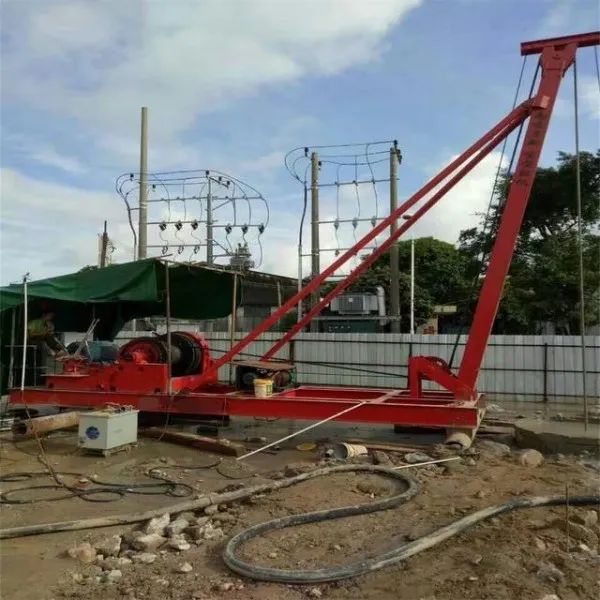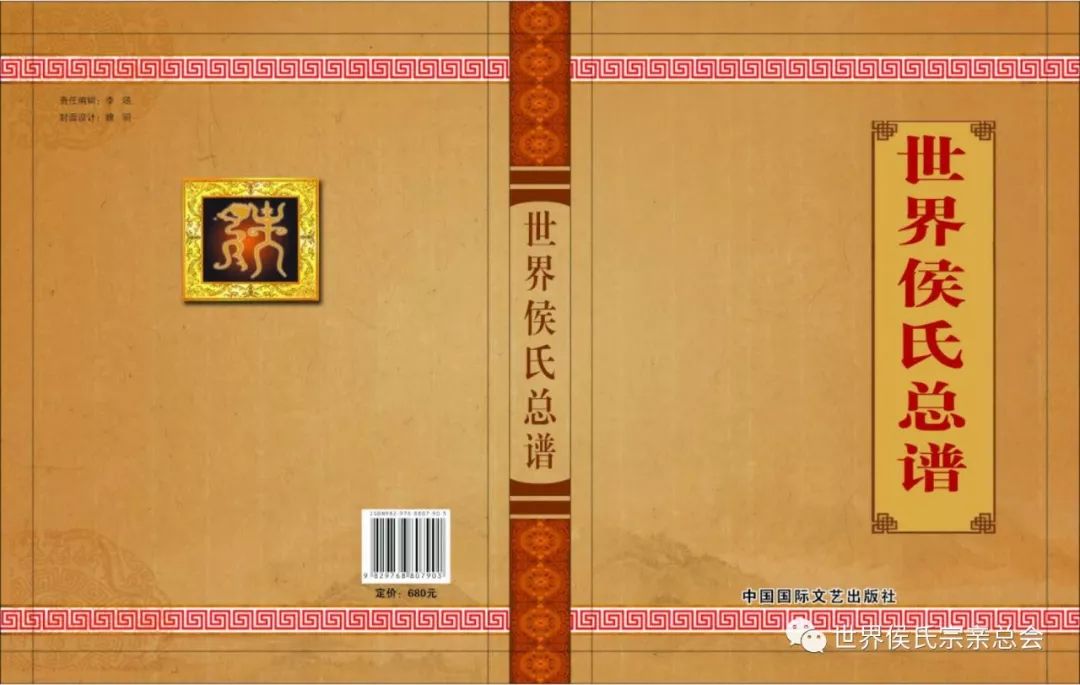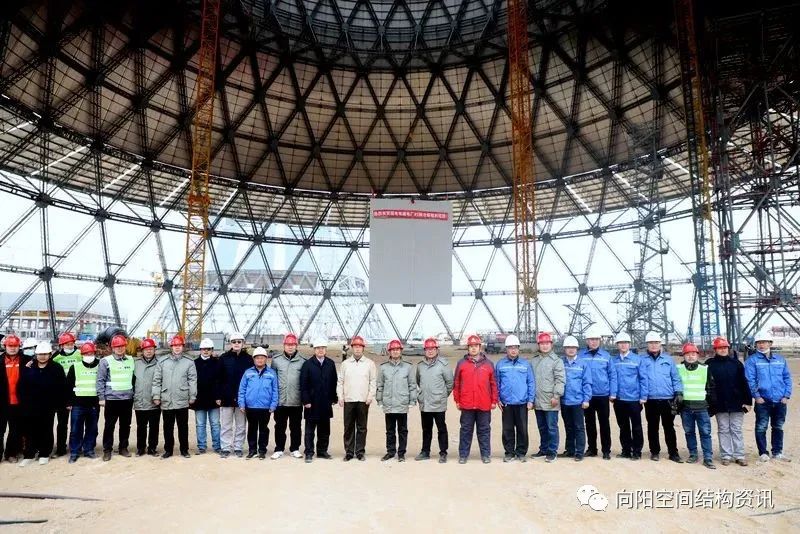This is a group of peaceful courtyards located in the Taoxi River Industrial Heritage Protection and Renewal Area of Jingdezhen.

The overall architectural layout starts from maximizing the preservation of an old tree on the site, and focuses on preserving, repairing, and locally adding to the existing warehouses, dormitories, and distribution rooms, with an area of 8290 square meters.

The design team chose “yard” and “porch” as the main space types.

The camphor tree forest with its canopy touching each other is enveloped by a new double layered wooden corridor.

The bottom floor of the corridor is elevated, and the second floor is completely transparent, creating a quiet atmosphere of the academy, serving as the “spiritual leader” of the entire place.
Around the old wutong tree in the west, a brick courtyard opened inwards, carrying various conference functions.
The ceramic bricks around the old wutong are warm brown, close to the soil, thinner than ordinary bricks, and the size of the bricks is consistent with that of the local kilns in Jingdezhen.
The architect concentrated the guest rooms, with a three story high volume built above the old house in the north, a single corridor facing the outside street for lighting, and a balcony opening towards the camphor forest in the south, overlooking the vast urban landscape and continuous mountain ranges.
The mountain wall of the old warehouse in the south and the paulownia trees attached to it are like an isolated island that has been fully preserved and reinforced, while the rest have been completely removed and overhauled.
To meet its new functions, its roof has been raised by 1 meter, and the gaps between the double eaves generated by the new and old heights have skylight and tree shadows.
The roof truss has been replaced with a steel truss to continue the form of the original wooden truss.
The eastern and western sections of the space have been transformed into a lobby and dining space, which can be opened to the public simultaneously.
Buildings sensitively convey different information and attitudes towards different urban segments around them.
On the east side, the building presents a crawling posture – the forest looks like a transparent screen in winter, a rich and soft wall in summer, and below can be seen a folding corridor eaves topped by black steel columns and several horizontally elongated courtyard walls.
This low entrance corridor descends and descends along a gentle slope with a height difference of 2 meters, crossing through dense forests and extending into the porch outside the lobby.
Old tree trunks and new steel columns together form a new spatial order in architectural design. Answer: Good design will definitely make a qualitative leap in quality of life, and good design will definitely make business more prosperous!.
Whether it’s in daily life, home, or production and operation scenarios, “function” always stands at the forefront of everything! A successful design can definitely make users feel happy and achieve twice the result with half the effort. For example, entering this bedroom can help them sleep well, and customers who come to this retail store will not leave empty handed! It is not difficult to achieve these goals. Designers only need to use ergonomics to control the scale during the production design process, and at the same time, apply materials and colors to create an atmosphere that is in line with the attributes of the use space! Of course, if it were a production and business premises, there would be a slight additional step, which is to create a work/consumption “show” for producers/consumers that lasts for several hours, is rich in content, and has a rich experience!.
Observing and reviewing the dominant architectural design ideas of the past thirty years, using the standard of “reasonable functionality” can already classify a considerable portion of architectural designs as failing (such as huge hollow living rooms, tiny kitchens, and cramped bathrooms…); There is also a considerable number of architectural design projects led by designers and inexplicably participated by homeowners, focusing on pursuing “pseudo high-end” through freehand brushwork and abstract decoration, which is actually a complete waste of both money and resources!.
Answer: It all depends on whether the funds, materials, and manpower required to repair and reinforce a new house exceed those required for new construction. It’s more than just a simple business account! However, the factors that affect the value of a building usually include land location, feng shui, and other objective factors. If these factors are encountered, it is not difficult to make two extra entries in the account. Unstoppable and highly attractive high-end residential fa ç ade [architectural design] As a high-end residential product, flat rise luxury homes have the characteristics of privacy, comfort, and high-quality property services, making them suitable for the following groups: residents who value privacy and space; Homebuyers with strong economic strength; A group of people who pursue a high-quality lifestyle. The design inspiration for the Red Fan Shell comes from the smooth curves, natural shapes of desert sand ripples and sand dunes, as well as the structure of the shell itself. Choose the shape of a shell to symbolize ancient fishing art, as Qatar was one of the earliest fishing countries in the past, and fishing was its lifeline..
The design of this modern hotel can be regarded as a luxurious and comfortable oasis, perfectly integrating modern design with the surrounding primitive scenery. The hotel boasts smooth lines and a minimalist architectural style, becoming an exquisite lighthouse against the backdrop of endless sand dunes and flowing sand. Its spacious glass curtain wall offers a panoramic view of the desert landscape, immersing guests in the tranquil beauty of the wilderness while enjoying all the comfort of modern life. The interior design exudes a warm and elegant atmosphere, with earth tones and natural materials creating a sense of harmony with the desert. Every aspect of the hotel is designed to provide you with an unforgettable desert relaxation and exploration journey..
The architectural design of Tianzhu International Hotel in Guoluo Tibetan Autonomous Prefecture, Qinghai Province draws inspiration from ethnic culture, aiming to showcase the rich connotations and unique charm of Tibetan culture. The design inspiration comes from the essence of Tibetan architectural culture, integrating traditional elements with modern architectural concepts to create a unique and distinctive hotel. The exterior of the building will incorporate artistic Tibetan decorative elements, unique window lattice design, exquisite murals, etc., highlighting the unique aesthetic of Tibetan culture..
In terms of spatial layout, the design will consider the lifestyle concept and era characteristics of Tibetan culture, creating comfortable and culturally rich functional spaces such as guest rooms, restaurants, and leisure areas. In addition, elements of the local natural environment will be integrated to coordinate the building with the surrounding landscape and provide a pleasant living experience. Through the architectural design of Tianzhu International Hotel, we aim to showcase the vibrant cultural heritage of Guoluo Tibetan Autonomous Prefecture and create a unique architectural masterpiece that seamlessly combines tradition and modernity, culture and art. Common problems in building design for HVAC professionals include 16-18 civil air defense. According to Article 5.2.14 (1-4) of the Design Specification for Civil Air Defense Engineering Combined with Peace and War (DB11/994-2021), it is required that the wartime exhaust system can be set according to the diagram in Figures 5.2.14-1 to 5.2.14-4. After the inspection, whether some practices in the national standard atlas and design manual are allowed to be used in the project?.
Answer: It is not necessary to strictly follow the standard diagram for setting up. The method of using national standard atlases or manuals can be adopted, but the premise is that it must comply with the protection principle and meet the requirements of anti shock wave and anti virus during wartime..
(Provided by Wang Xiaoming, Zhongshe Antai (Beijing) Engineering Consulting Co., Ltd.).
How to understand the concept of “smoke exhaust and other smoke control measures should be taken for underground or semi underground Class D production sites with a building area greater than 1000m2” mentioned in Article 8.2.2, Paragraph 4 of the General Code for Building Fire Protection GB 55037-2022?.
Answer: The building area here refers to the area of the same usable space..
The implementation guidelines of GB 55037-2022, the General Code for Fire Protection in Buildings, compiled by the standardization team, mention that the construction area of the “production site” mentioned in Article 8.2.2 is for the same use space. For example, an underground Class D production site with a building area of 1200m2 is divided into two production sites with an area of 600m2 using fire barriers. Since the area of each production site does not exceed 1000m2, smoke exhaust facilities may not be required. It is worth noting that if this area is a production site where personnel stay for a long time, and it is located underground without openable external windows and has an area exceeding 50m2, according to Article 8.2.5 of the General Code for Building Fire Protection GB 55037-2022, mechanical smoke exhaust facilities must be installed. Common Problems in Housing Architecture Design – Water Supply and Drainage 13-15 Quality | For newly built residential buildings, washing machines should be installed in the living room or dining room, not adjacent to the kitchen or bathroom. Can drainage pipes be directly installed in the living room or dining room?.
According to Article 4.4.1 (6) of the Design Standard for Building Water Supply and Drainage (GB 50015-2019), the layout of indoor drainage pipes should comply with the following regulations: drainage pipes and ventilation pipes should not pass through the living room and dining room of residents, and drainage pipes should not be close to the inner wall adjacent to the bedroom. Therefore, the installation of drainage pipes in the living room or dining room does not meet the above requirements. It is necessary to communicate with the architectural profession to adjust the layout or adopt other technical solutions, such as using same floor drainage measures, to meet the regulatory requirements..
(Provided by Yuan Jianghua, Beijing Guobiao Architectural Design Consulting Co., Ltd.).
Can two fire hydrants be connected from the same fire hydrant riser on the same plane?.
Answer: According to the relevant provisions of Article 8.1.6 of the Technical Specification for Fire Water Supply and Fire Hydrant Systems (GB 50974-2014), the layout of indoor fire hydrant circular water supply network and valves should ensure that necessary fire water is still available for each fire compartment during network maintenance..
So, in the following two situations, two fire hydrants can be connected from the same fire hydrant riser:.
(1) For places that can reach any part of the indoor space using a single enriched water column;.
(2) For places where two solid water columns need to reach any part of the same plane simultaneously:.
If two fire hydrants are not in the same fire compartment and do not need to be borrowed from each other, two fire hydrants can be connected from the same fire hydrant riser; If two fire hydrants are in the same fire compartment, not adjacent and not used simultaneously, two fire hydrants can be connected from the same fire hydrant riser. Architectural Design | 20 charming residences that blend in with nature.
JDS Architecture is located on a small hill in Bois D’Amont, France, hoping that the house can “embrace its landscape” – although in many ways, it is the landscape that embraces the house.
The large windows define the front and back facades of the house, allowing ample natural light to enter the interior of the house.
O67 House was designed by Spanish company Osvaldo Luppi Architects and built on a small hill on the island of Mallorca, Spain, overlooking the Mediterranean Sea.
The nineteen foot hammering wall creates a roofed outdoor terrace space, further enhancing the connection between family and nature.
The Jungle House is located on the Paulista Coast, designed by Studio MK27 and surrounded by dense jungle vegetation.
In order to integrate the house into the landscape, the architect chose to elevate the main volume of the house to appear integrated with the site terrain.
Vegetation is also present on the roof, swimming pool, and deck to further integrate into the environment.
Japanese architect Terunobu Fujimori designed this treehouse in 2004 in the Maoye Forest of Nagano Prefecture.
The thin chestnut tree supports this structure, and there is a small tea room inside.
In fact, Fujimori named this house “Takayasu An”, which means “a tea house built too high”.
Frank Lloyd Wright is undoubtedly one of the most famous medieval modern architects.
His buildings – including the Solomon R. Guggenheim Museum in New York City, the Unity Temple in Oak Park, Illinois, and his winter residence in Scottsdale, Arizona – were among the most popular during an era of simple lines and organic materials.
However, his flowing villa may be his most famous design, as it is built on the natural waterfall of Bear Run.




